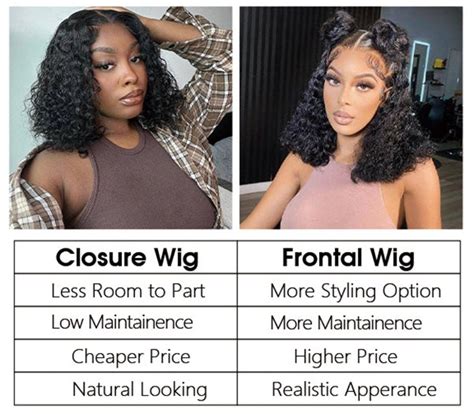Introduction
In the realm of facial aesthetics, closure and frontal techniques play pivotal roles in achieving desired outcomes. While both serve the purpose of rejuvenating the appearance, they differ in their approach and results. Understanding these differences can empower you to make informed decisions about your aesthetic journey.

Closure vs. Frontal: A Comparative Analysis
1. Definition and Approach
Closure
- Involves the removal of excess skin and tissue from the lower eyelid, creating a “closed” appearance.
- Targets sagging skin, fine lines, and wrinkles.
Frontal
- Lifts and tightens the brows, forehead, and midface.
- Reduces wrinkles, creases, and drooping eyebrows.
- May involve a brow lift or forehead lift.
2. Targeted Areas and Results
Closure
- Lower eyelid
- Diminishes under-eye bags, hollowness, and puffiness
- Creates a youthful and refreshed appearance
Frontal
- Brows, forehead, and midface
- Smooths wrinkles and furrows
- Lifts and tightens sagging skin
- Restores a more youthful and alert expression
3. Pros and Cons
Closure Pros
- Addresses aging signs in the lower eyelid
- Improves under-eye contour
- Minimally invasive procedure with less downtime
Closure Cons
- May not address sagging brows or forehead wrinkles
- Risk of lower eyelid ectropion (eyelid eversion)
Frontal Pros
- Comprehensive rejuvenation of the upper face
- Lifts and tightens multiple areas
- Can restore a youthful and energetic appearance
Frontal Cons
- More invasive procedure with longer downtime
- Potential for scarring or nerve damage
- May not be suitable for all individuals
Market Demand and Patient Profiles
Recent statistics reveal a growing demand for both closure and frontal procedures:
- According to the American Society for Plastic Surgery (ASPS), there were over 170,000 eyelid surgeries and 73,000 forehead lifts performed in the United States in 2020.
- Patients seeking closure tend to be in their 30s-50s, concerned about under-eye aging signs.
- Frontal procedures typically appeal to individuals in their 40s-60s who desire a more comprehensive facial rejuvenation.
Key Considerations for Decision-Making
Choosing between closure and frontal depends on individual preferences and aesthetic goals. Consider the following factors:
- Aging concerns: Identify the specific areas of the face that you wish to address.
- Surgical goals: Determine what you hope to achieve from the procedure.
- Risk tolerance: Understand the potential risks and complications associated with each technique.
- Recovery time: Factor in the recovery period and downtime involved with both procedures.
Step-by-Step Approach
1. Consultation: Schedule a consultation with a board-certified plastic surgeon to discuss your goals and evaluate your suitability for either procedure.
2. Pre-operative Preparation: Follow the surgeon’s instructions for pre-operative preparation, such as avoiding blood thinners and smoking.
3. Surgery: The closure or frontal procedure will be performed in an outpatient surgical facility under local anesthesia or intravenous sedation.
4. Recovery: Expect some swelling, bruising, and discomfort in the treated areas. Follow the surgeon’s post-operative instructions carefully to minimize downtime.
5. Follow-up: Attend follow-up appointments with the surgeon to monitor your progress and ensure optimal results.
Innovative Applications: “Fronclosure”
A recent innovation in facial aesthetics is the combination of closure and frontal techniques, known as “fronclosure.” This hybrid approach offers a comprehensive rejuvenation of the entire face from the lower eyelid to the forehead. Fronclosure can address:
- Sagging eyelids
- Drooping brows
- Wrinkled forehead
- Hollow under-eyes
This innovative combination provides a more youthful and refreshed appearance, catering to the demands of today’s beauty-conscious consumers.
Conclusion
Closure and frontal techniques offer distinct solutions for facial rejuvenation, addressing specific aging concerns and aesthetic goals. Understanding the differences between these procedures empowers you to make an informed decision that aligns with your desired outcomes. Consult with a qualified plastic surgeon to explore the best option for you and achieve your desired transformation.
